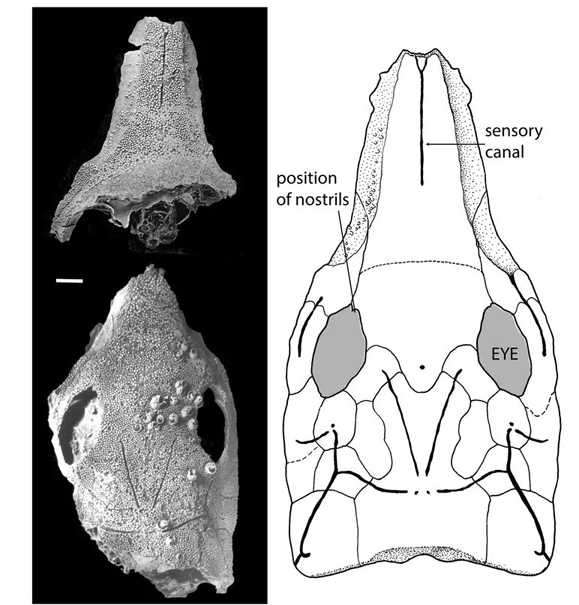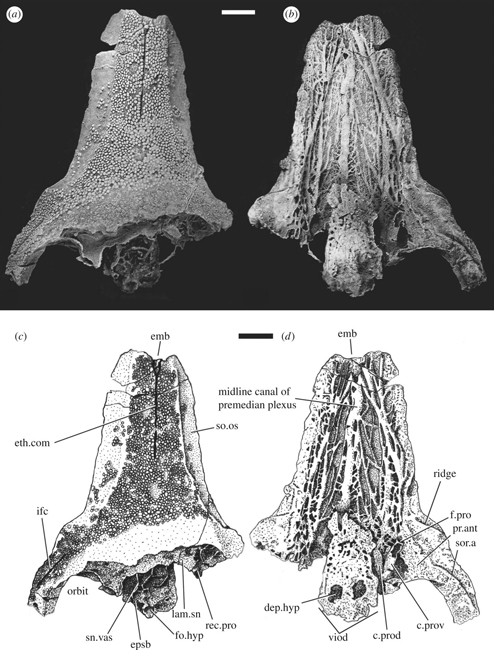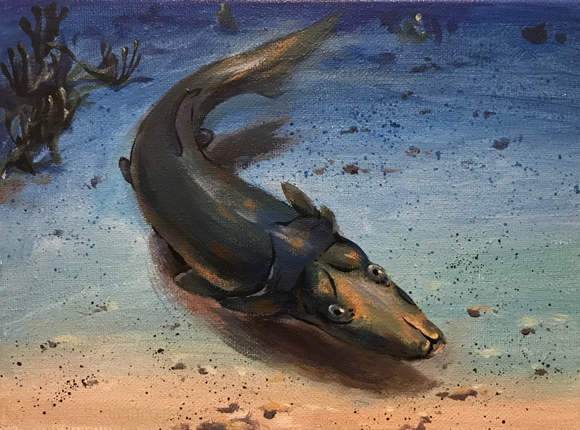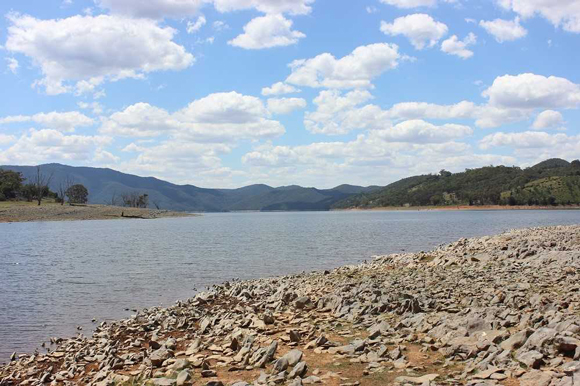Brindabellaspis – Placoderm Resident on Australia’s First Reef
The Queensland coast (Australia), might be famous for its Great Barrier reef today, but this was not Australia’s original reef, some 400 million years ago, there was a reef, located in what is now New South Wales, mostly built by entirely different types of organisms, that was a natural wonder of the Early Devonian. Living on the bottom of the shallow sea in which this ancient reef formed was a strange-looking fish, with a sensitive beak, oddly reminiscent of another, not quite so ancient resident of “Down Under” – a duck-billed platypus. This strange animal has been named Brindabellaspis stensioi.
New Research Suggests that Brindabellaspis stensioi had a Sensitive “Beak” Like A Duck-billed Platypus
Picture credit: Jason art Shenzhen
Brindabellaspis stensioi
The placoderm, named Brindabellaspis stensioi was originally scientifically described in 1980. However, new fossil specimens, revealed by carefully removing the rock matrix using dilute acids, have shed new light on the evolution of jaws and provided palaeontologists with evidence that the earliest fish dominated ecosystems supported a myriad of forms.
Limestone beds exposed on the shores of Lake Burrinjuck in New South Wales have preserved an extensive reef fauna. Over seventy species of fish have been identified to date, of these, it is the placoderms that dominate, with around 45 species named and described so far. Palaeontologists from Flinders University (South Australia) and the Australian National University (Australian Capital Territory), have reconstructed two of the ancient fossils and discovered that Brindabellaspis had a long bill (rostrum), extending out in front of its eyes.
The Picturesque Limestone Beds of Lake Burrinjuck
Picture credit: Flinders University
One of the authors of the study, published in “Royal Society Open Science” Benedict King, a Flinders University graduate stated:
“This was one strange looking fish. The eyes were on top of the head and the nostrils came out of the eye sockets. There is this long snout at the front, and the jaws were positioned very far forward.”
A Unique Sensory System
Following a comprehensive evaluation of the skull including the anterior portion (revealed for the first time with these new specimens), the researchers discovered an exceptionally long premedian bone forming an elongated rostrum, supported by a thin extension of the postethmo-occipital unit of the braincase. This seems to be a modified form of pressure sensor, perhaps used to detect prey in the muddy/sandy bottom of the seafloor.
Professor John Young (Flinders University), a world authority on ancient fish and a co-author of the paper added:
“We suspect that this animal was a bottom-dweller. We imagine it used the bill to search for prey, somewhat like a platypus, while the eyes on top of the head looked out for danger from above.”
Adding the Missing Pieces – Thirty-Eight Years Later
For Dr Gavin Young (Flinders University), the discovery of the front portions of the skull and that remarkable, sensitive rostrum helps to “flesh out” his original research on Brindabellaspis stensioi. Dr Young has spent more than five decades studying the fossil fish from the Lake Burrinjuck limestone beds, Dr Young was responsible for naming and describing this placoderm in 1980, now thanks to these new fossils and high-resolution X-ray tomography, this 400-million-year-old fish has a face, albeit a very peculiar one, but one that may demonstrate convergent evolution with the egg-laying monotreme (platypus – Ornithorhynchus anatinus).
New Specimens of Brindabellaspis stensioi Included in this Study

Picture credit: Royal Society Open Science
Dr Young explained:
“When we saw the dense sensory tubes on another broken snout, we immediately thought of the local platypus. I am very gratified there is finally an accurate reconstruction of this strange skull.”
Specialists and not Generalists
The scientists conclude that as Brindabellaspis was clearly such a specialist, then the ancient reef was a thriving and very diverse ecosystem with very probably, a range of specialist organisms making a living on the reef and in the surrounding shallow waters.
Professor Long commented:
“Despite this being one of the earliest well-known ecosystems including many species of fish, the inhabitants of this ancient reef were clearly not in any way primitive. The new findings show that they were highly adapted and specialised in their own right.”
The Elongated Premedian Plate (Rostrum) of Brindabellaspis stensioi

Picture credit: Royal Society Open Science
The scientific paper: “New Information on Brindabellaspis stensioi Young, 1980, Highlights Morphological Disparity in Early Devonian Placoderms” by Benedict King, Gavin C. Young and John A. Long published in by Royal Society Open Science.
Everything Dinosaur acknowledges the assistance of a press release from Flinders University in the preparation of this article.
Visit the Everything Dinosaur website: Everything Dinosaur.








Leave A Comment